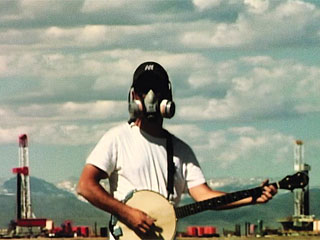
A few weeks ago, I was stuck in bed with the flu and was combing Netflix for something to watch. After a bit of browsing, I came across Gasland, a documentary about the fracking industry released in 2010. I turned on the movie and within a few minutes I couldn’t stop watching.
The visuals are powerful (including a jaw dropping scene in which a man lights his tap water on fire), the information is well researched and relevant, and the characters are funny and engaging. But there’s something else that makes the film truly unique and wonderful that’s unfortunately missing from too many documentaries out there.
The story is deeply personal.
To help you make your stories, pitches and maybe even documentary films more personal, here are “3 Tips for Connecting with Your Audience“. Follow these tips and you’ll have the Academy calling you before you know it.
- Put Yourself in the Story. The first thing that drew me in about Gasland was an image of the filmmaker, Josh Fox, playing around with his family on a beautiful piece of land in Pennsylvania. The audience then sees a copy of the note that Josh receives from a gas company offering him $4,000 in exchange for extraction rights. But rather than recoiling, the stakes of the film become clear and we’re now rooting for Josh. When you make it personal, you engage your audience immediately.
- Show Vulnerability. Once you’ve hooked your audience with something personal, the simplest way to maintain their attention is to expose a personal challenge or shortcoming. When you put yourself on the line, you take a big risk: the audience may initially react with surprise or even discomfort. But once the audience fully grasps the struggles of the storyteller, they’ll see the central problem of the story through the storyteller’s eyes. In Gasland, for example, Josh periodically draws the audience back into his personal worries and concerns with voiceovers, which puts the economic and political forces surrounding the issue of fracking in context. A little vulnerability makes complex information digestible.
- End With An Image. The strongest way to end a story is to offer a powerful visual. In many cases, this means returning to the personal elements introduced in the beginning of the story. Much like the first scene in the film, the last scenes of Gasland are of Josh Fox on his land. In a voiceover, Josh mentions that he’s not sure what’s going to happen to his land but that he’s learned a lot about America in the process of traveling the country. The final image transforms the story from a simple recounting of a problem into something larger: a quest for identity in America. When you end with a strong visual, the story becomes more memorable.
Pretty powerful, right?
(Originally published at The Story Source.)

Commentary
Got something to add?